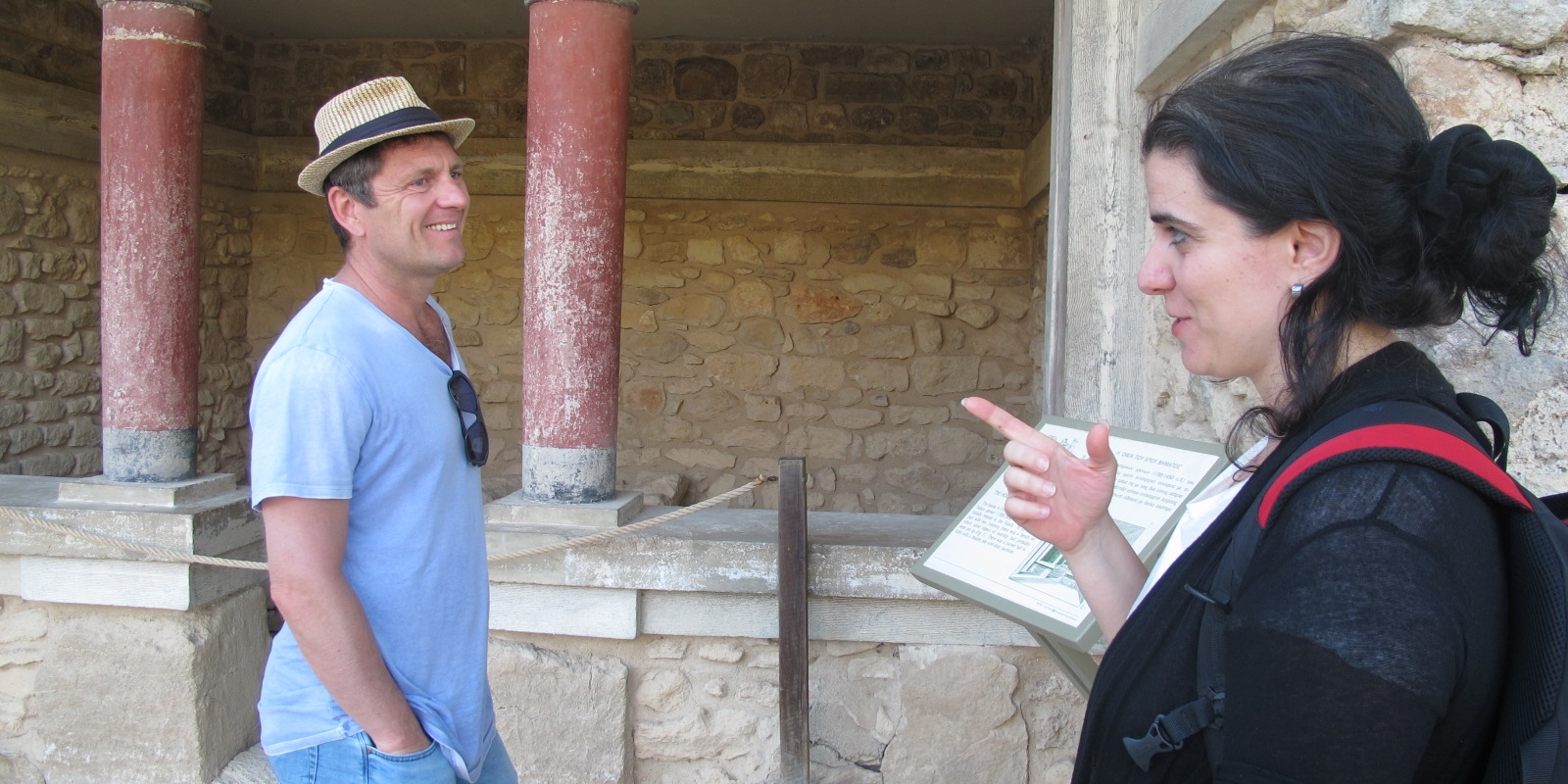barefoot and the ZORBA team have returned from five enriching and sun-drenched days on the island of Crete. We owe much to those who helped make our time in Greece so special; it’s thanks to them and their famous Greek hospitality that we were able to get such a privileged glimpse into Cretan culture and the world of Nikos Kazantzakis. The old stones and colorful frescoes in Knossos, the welcome glass of Raki in Mirtia, the Stavrou beach sunset ... these sensations, along with a deeper knowledge of Crete, prove invaluable as we continue to create ZORBA.
All we can say is, ευχαριστούμε πολύ !
Knossos and Arkadi, historical legacies
When we first got to Knossos, the cradle of Minoan civilization and one of Greece’s most important archeological sites, it was striking just how difficult it was to decipher the ancient ruins from the relatively “recent” additions made by Sir Arthur Evans, the British archeologist who famously unearthed the Knossos palace and had it built up with cement and stone. Knossos (often called “Europe’s oldest city”) and its palace serve as markers of time on which we can see traces of the Neolithic period, the Bronze Age, the Classical period and the changes it has undergone since the 19th century, when it became an ‘archeological site’. If stones could speak, the ones we saw here would certainly have many incredible stories to tell. Maybe if we listen closely enough they’ll whisper some in our ear as we move foward with Zorba...?
We also visited the Arkadi monastery, a very important historical site and a national sanctuary to Cretan resistance. This is where the Cretans were defeated in an ultimate resistance against the Turkish rule. It was here that the infamous massacre took place in which children, women and elderly who were hiding away in the powder room decided to blow themselves up rather than be captured. The tragedy of Arkadi attracted the world’s attention to the conflict in Crete... and eventually led to its independence. The rich, albeit violent, history here now rests peacefully, nestled within a beautiful site set up on a hill, surrounded by countryside. It is a set of buildings in a square courtyard, with the Roman/baroque style church in the middle. The light surrounding the Arkadi monastery is soft and luminous — both during the day and at dusk – bathing it in a sacred glow. It was a fascinating, humbling site to explore...




